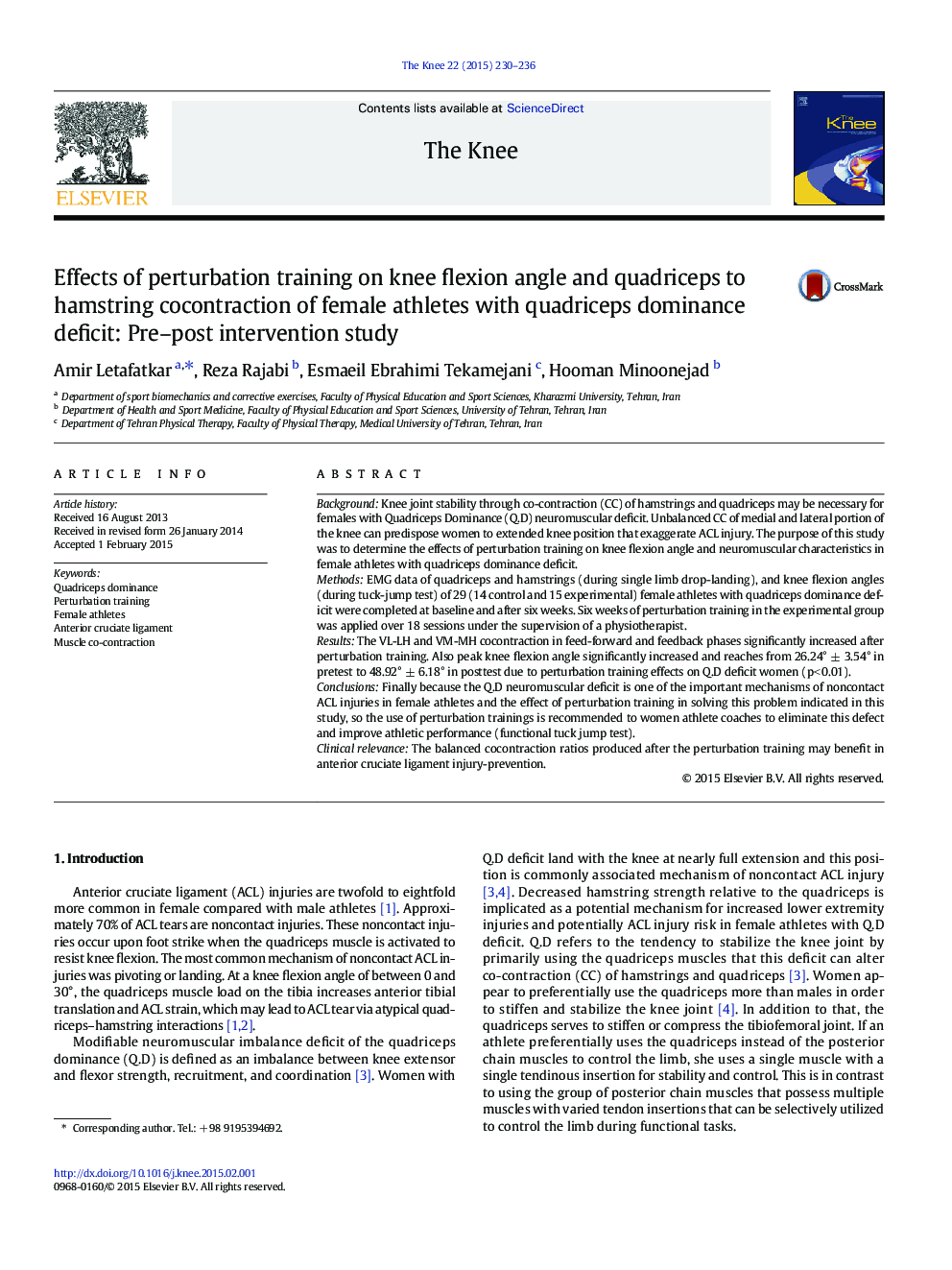| Article ID | Journal | Published Year | Pages | File Type |
|---|---|---|---|---|
| 4077326 | The Knee | 2015 | 7 Pages |
BackgroundKnee joint stability through co-contraction (CC) of hamstrings and quadriceps may be necessary for females with Quadriceps Dominance (Q.D) neuromuscular deficit. Unbalanced CC of medial and lateral portion of the knee can predispose women to extended knee position that exaggerate ACL injury. The purpose of this study was to determine the effects of perturbation training on knee flexion angle and neuromuscular characteristics in female athletes with quadriceps dominance deficit.MethodsEMG data of quadriceps and hamstrings (during single limb drop-landing), and knee flexion angles (during tuck-jump test) of 29 (14 control and 15 experimental) female athletes with quadriceps dominance deficit were completed at baseline and after six weeks. Six weeks of perturbation training in the experimental group was applied over 18 sessions under the supervision of a physiotherapist.ResultsThe VL-LH and VM-MH cocontraction in feed-forward and feedback phases significantly increased after perturbation training. Also peak knee flexion angle significantly increased and reaches from 26.24° ± 3.54° in pretest to 48.92° ± 6.18° in posttest due to perturbation training effects on Q.D deficit women (p < 0.01).ConclusionsFinally because the Q.D neuromuscular deficit is one of the important mechanisms of noncontact ACL injuries in female athletes and the effect of perturbation training in solving this problem indicated in this study, so the use of perturbation trainings is recommended to women athlete coaches to eliminate this defect and improve athletic performance (functional tuck jump test).Clinical relevanceThe balanced cocontraction ratios produced after the perturbation training may benefit in anterior cruciate ligament injury-prevention.
